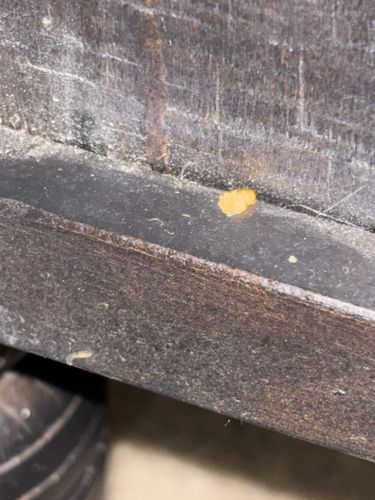Mold Mite
Scientific Name: Various species, often in genera like Tyrophagus or Acarus. Exact species identification is not possible from the image.
Order & Family: Order: Sarcoptiformes, Family: Acaridae (specifically, some species in this family are commonly referred to as mold mites or cheese mites). Due to the difficulty of precise identification from the image, this is a general classification.
Size: Typically very small, less than 1 mm in length, often appearing as tiny specks to the naked eye.

Natural Habitat
Damp environments with high humidity, such as basements, bathrooms, crawl spaces, and areas with water damage. They are often found on or under damp wood, behind wallpaper, or in stored provisions.
Diet & Feeding
Feeds on molds, fungi, and decaying organic matter.
Behavior Patterns
Found in damp, dark places. Often seen in small clusters. They move slowly and are attracted to decaying matter and mold.
Risks & Benefits
Potential risks include triggering allergies (respiratory issues, skin irritation) in sensitive individuals due to their presence and excretions. They can contaminate food products if infestations occur in pantries. Generally, they are not beneficial, and their presence indicates excessive moisture and potential mold growth.
Identified on: 8/19/2025